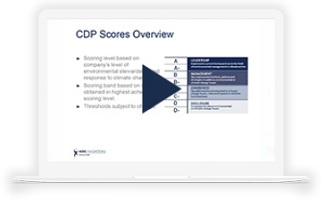Our Perspective
Adopted by representatives of 195 countries at the 21st Conference of the Parties (COP21) in 2015 and signed in New York in 2016, the Paris Agreement set the universal goal of keeping the rate of global temperature rise this century less than 2°C above pre-industrial times. Read More
Industry Updates
China launched a cap-and-trade program in December 2017 that will initially just cover its electricity industry, which is powered mostly by coal-fired generation. In due course, it will expand and involve its transportation and industrial sectors. Read More
ROME (Thomson Reuters Foundation) – Kenya’s Tana River Basin, a major source of hydroelectric power, food and fresh water, may see its annual rainfall increase as much as 43 percent by the end of the century because of climate change, scientists said on December 19, 2017. Read More
Top Blog Posts
- Climate Change and the Fast-Vanishing Land North of the Arctic Circle
- 4 Steps to Improve your CDP Performance Webinar: Key Takeaways for Improving Your Company's CDP Performance
- Why Addressing Deforestation Makes Good Business Sense
- Steps to Improve Your Company's CDP Performance
- Achieving the SDGs Through Wastewater Management
JAN 2018
Special Feature
4 STEPS TO IMPROVE YOUR CDP PERFORMANCE
ADEC Innovations has scored more than 20,000 CDP responses and conducted over 1,400 review calls since 2011. ADEC Innovations has unique experience in the scoring methodology and provides services that help improve your CDP performance.
CDP enables organizations to benchmark, measure and manage their environmental risks, while at the same time improve their brand reputation, increase operational efficiency and lower their costs. Register for a CDP review here to formulate a plan for improvement.
250 Commerce, Suite 210
Irvine, CA 92602
USA
+1 888 826 5814
+1 714 508 4100
Sign up for our monthly GreenWatch newsletter for updates, resources from our team, and the latest industry news.
ADEC Innovations would like the information in this website to be accessible to all our users. Anyone needing assistance or having difficulty accessing this website should call us toll-free at +1 888 826 5814 or email us at esginfo@adec-innovations.com.





